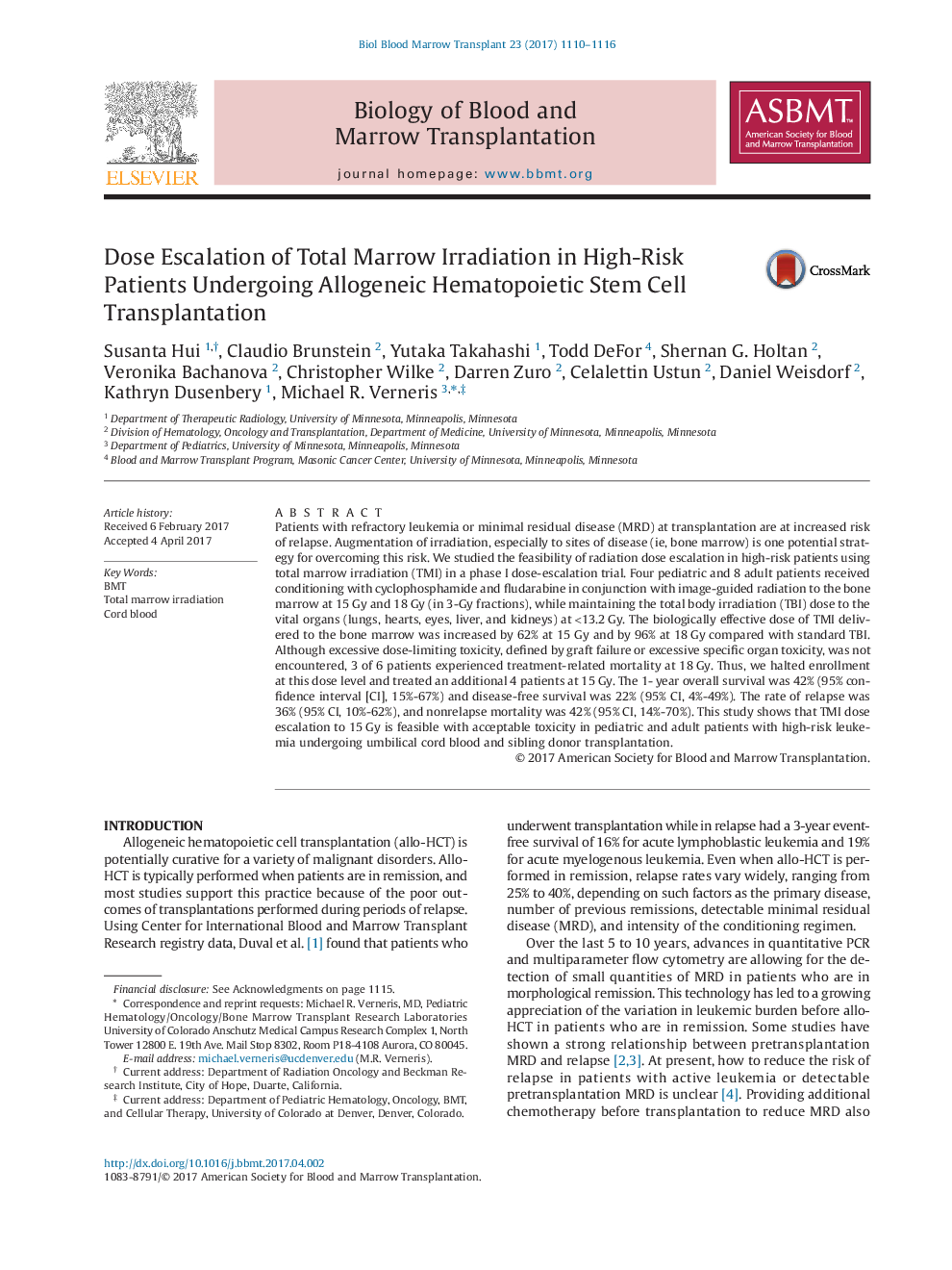| Article ID | Journal | Published Year | Pages | File Type |
|---|---|---|---|---|
| 5524346 | Biology of Blood and Marrow Transplantation | 2017 | 7 Pages |
â¢It was feasible to escalate irradiation to 15âGy using total marrow irradiation (TMI). Further escalation to 18âGy was not possible, owing to the combined toxicities of irradiation and chemotherapy.â¢The biological effective dose delivered to the bone marrow was substantially increased in TMI, whereas the actual irradiation dose was similar to that in total body irradiation.
Patients with refractory leukemia or minimal residual disease (MRD) at transplantation are at increased risk of relapse. Augmentation of irradiation, especially to sites of disease (ie, bone marrow) is one potential strategy for overcoming this risk. We studied the feasibility of radiation dose escalation in high-risk patients using total marrow irradiation (TMI) in a phase I dose-escalation trial. Four pediatric and 8 adult patients received conditioning with cyclophosphamide and fludarabine in conjunction with image-guided radiation to the bone marrow at 15âGy and 18âGy (in 3-Gy fractions), while maintaining the total body irradiation (TBI) dose to the vital organs (lungs, hearts, eyes, liver, and kidneys) at <13.2âGy. The biologically effective dose of TMI delivered to the bone marrow was increased by 62% at 15 Gy and by 96% at 18âGy compared with standard TBI. Although excessive dose-limiting toxicity, defined by graft failure or excessive specific organ toxicity, was not encountered, 3 of 6 patients experienced treatment-related mortality at 18âGy. Thus, we halted enrollment at this dose level and treated an additional 4 patients at 15âGy. The 1- year overall survival was 42% (95% confidence interval [CI], 15%-67%) and disease-free survival was 22% (95% CI, 4%-49%). The rate of relapse was 36% (95% CI, 10%-62%), and nonrelapse mortality was 42% (95% CI, 14%-70%). This study shows that TMI dose escalation to 15âGy is feasible with acceptable toxicity in pediatric and adult patients with high-risk leukemia undergoing umbilical cord blood and sibling donor transplantation.
